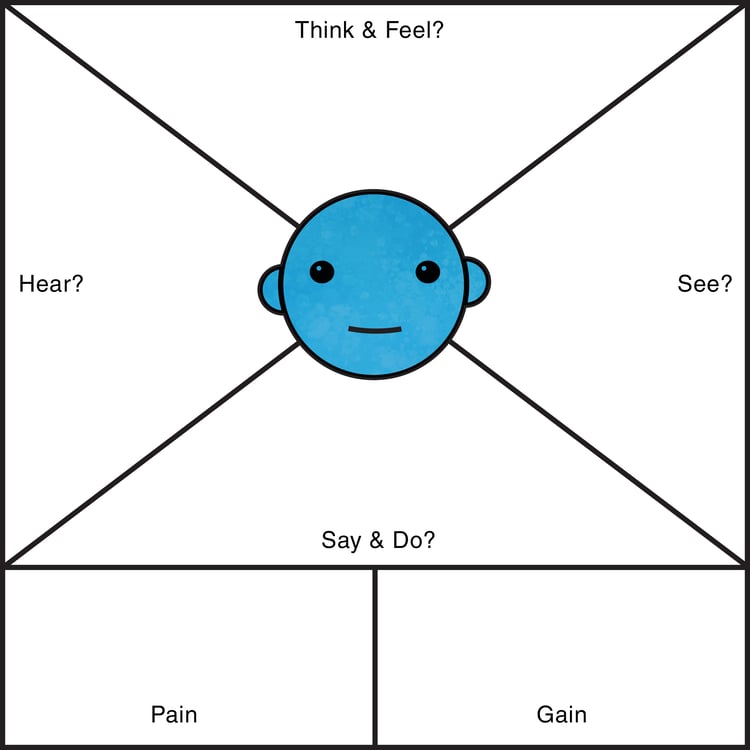
When you’re trying to generate leads and sales with inbound, the first thing to ask yourself is who are you trying to reach. Your content marketing is only as effective as the audience that is consuming it. If it doesn’t reach the right people, it will always be ineffective. In order to define who your audience is, you need to create buyer personas. If you’re not familiar with this term, you can check out our post that explains what buyer personas are and why are they are important first.
A buyer persona is an imaginary person who best describes your ideal customer: their sex, age, occupation, marital status, etc. In addition to demographic information, the most effective buyer personas include a psychographic profile including their typical day at work, leisure activities, and so on. When creating buyer personas, you need as much information as you can gather about your customers as possible.
How to Find Information for Buyer Personas?
Companies with websites that get thousands of daily visitors have it easy - tools like Google Analytics help them learn a great deal about their potential clients. But what if you don’t have a sample large enough to draw any conclusions about the demographics of your visitors? On the other hand, what if your company is getting a lot of traffic, but your conversion rate is low? Auditing your analytics isn’t going to generate meaningful information there either.
Your CRM
Look through your contacts database to uncover trends about how certain leads or customers find and consume your content. This will help you determine your business’s strong points you should focus on to attract more people. If you don’t already have a customer relationship management tool, you should get one! We use Hubspot CRM. It’s free and easy to use.
Website Forms
Ask smart questions when creating forms on your website. For example, you can inquire about the person’s job title, the size of their company, or the industry they’re in. It is essential to find the sweet spot between asking too few questions and driving prospects away with forms that are too long. Some marketing automation platforms include smart forms that swap in and out form fields based upon what you already know and don’t know about your prospect. Offering eBooks, white papers, and similar content in exchange for information is an effective way to gather leads.
Sales Team’s Feedback
Many companies overlook a great source of information that is right under their noses. Have your sales team document customers’ feedback and draw conclusions from it. They will have a lot of insight into what leads converted into customers, the different types of customers, their behavior, and needs.
Bonus tip: Get a list of questions asked by customers and make content that answers those questions on your blog to generate more leads.
Google Demographic Information
There is a ton of useful information at your fingertips if you just search for it. The Bureau of Labor Statistics has up-to-date information on many jobs including the average salary, job growth rate, unemployment rate, what kind of education they have, geographic information about people with the job title, and better understand your persona and the circumstances that affect their decision-making process.
Interviews and Surveys
Interviews are one of the most useful tools to gather information for buyer personas, because you’re getting answers straight from the horse’s mouth. It’s important to get feedback from happy customers but if possible, also from customers who didn’t have a great experience. It will help you understand both the drawbacks of your product or service and also to help you develop negative personas. Negative personas are the kinds of customers you don’t want. Something as simple as the customer costs more money than the revenue that bring in could be a part of your negative persona. Another example: if you’re a senior living facility and are struggling to grow or even meet the needs of your residents, this could mean adding Medicare patients to your negative persona.
How to Create Buyer Personas
Anecdotally, you probably already know some information about your targeted personas: maybe their age, sex, location, or the length of the sales cycle is obvious. Include these categories into your buyer persona as well:
Personal Details
Demographic information is the basis for every buyer persona. Are they male or female, how old are they, and where do they live? What is their relationship status and do they have children? What is their level of education and what did they study? What do they do in their spare time?
Professional Background
What is their job title and what responsibilities does it entail? Did they start their career in this field, or did they switch careers at some point? Who do they report to and do they manage other people? What software and tools do they use?
Goals and Challenges
What goals are they expected to meet and how is their professional success measured? What challenges do they face every day when trying to meet these goals?
Online Activity and Purchasing Decisions
How much time do they spend online, and what websites they visit the most? Which social media networks do they use? Which industry blogs or forums do they follow? Do they use the internet for online purchases? How do they make purchases and how do they decide on a provider? Do they prefer to communicate via email, phone, or in person?
Using an Empathy Map to Create Buyer Personas
Even the most well-thought out buyer persona concept can fall into pieces if you don’t take one thing into account: people are not robots and are not the averages of a bunch of statistics. To make buyer personas an effective basis for your content marketing strategy, we need to bring it down to the individual level and understand what makes your buy persona tick. A great tool to do this is the empathy map.

An empathy map helps you understand your buyer persona for who they really are: a person with goals, doubts, that does certain things, goes certain places, and so on. Using an empathy map, you understand how an ideal customer feels about your product or service, what would be their pain points or fears about the product, so how to best address those pain points becomes more clear.
Only after you are finished with the buyer persona creation process, should you start developing your content marketing strategy. Aside from large, enterprise companies you should start small with a couple of well-developed personas and build additional personas as you go. To understand this process completely and build the foundation for marketing success, get the guide.




